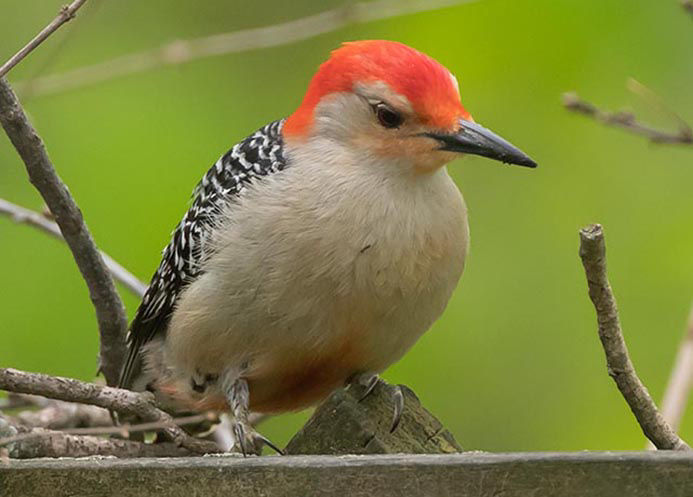Discover the Remarkable Globe of Woodpeckers: Every Little Thing You Required to Know
The world of woodpeckers is a world loaded with distinct behaviors, complex adjustments, and a varied array of species. From their environments and distribution patterns to their feeding behaviors and specialized anatomical features, woodpeckers have actually long captivated the rate of interest of ornithologists and nature lovers alike. Recognizing the intricacies of these fascinating birds offers a look right into the complicated interaction between their biology and the setting. As we check out the world of woodpeckers additionally, we uncover a wealth of info that sheds light on their significance in communities and the difficulties they deal with in an ever-changing globe.
Woodpecker Habitats and Circulation
In North America, for example, woodpeckers can be identified in both coniferous and deciduous woodlands, using their strong beaks to forage for bugs and create nesting dental caries in trees. In Africa, specific woodpecker types have actually adjusted to arid environments, such as the acacia woodlands, where they play a vital role in controlling insect populaces.

Feeding Behaviors and Diet
Among the various elements of their actions, woodpeckers display distinctive feeding behaviors and dietary choices. These birds are primarily insectivores, with a diet regimen that includes ants, beetles, caterpillars, and various other bugs discovered in trees. Woodpeckers utilize their solid beaks to drill right into the bark of trees, penetrating for bugs and larvae hidden beneath the surface area. Along with pests, woodpeckers additionally consume nuts, seeds, fruits, and sap. Some species have actually specialized tongues with barbed suggestions that aid them draw out pests from crevices in timber.
Woodpeckers are understood for their drumming actions, which serves not only to communicate with various other woodpeckers but also to find food. The quick drumming noise is developed by the bird pecking on powerful surface areas like dead trees or steel poles. This habits can draw in bugs hidden in the timber, allowing the woodpecker to discover their presence and eat them.
Special Adaptations for Tree Climbing
In their adept pursuit of insects concealed within tree bark, woodpeckers have actually developed exceptional physiological functions that outfit them with special adaptations for effective tree climbing. Among the key adaptations is their zygodactyl feet, with 2 toes pointing forward and two aiming backward, giving a strong grasp on tree trunks. This customized foot setup permits woodpeckers to stick to upright surfaces easily, allowing them to go up and down trees with agility. In addition, woodpeckers have stiff tail plumes that serve as an encouraging prop while they climb, helping in equilibrium and security. Their solid, chisel-like beaks are not only utilized for drilling right check this into wood yet also for gripping onto bark as they ascend tree trunks. In addition, woodpeckers have strong neck muscles and a special head structure that soak up the influence of continuous pecking, permitting them to climb up and down without causing damage to their minds. These adaptations display the incredible evolutionary style that makes it possible for woodpeckers to navigate trees with accuracy and efficiency.
Diverse Woodpecker Types Worldwide
With over 200 different types spread out across various habitats worldwide, the family members of Picidae encompasses an impressive variety of woodpeckers. These birds can be discovered in forests, timberlands, savannas, and also urban areas, showcasing their flexibility to various settings. From the famous Northern Flicker in The United States And Canada to the vivid and elusive Crimson-backed Flameback in Asia, each woodpecker types displays distinct qualities in regards to plumage, habits, and habitat preference.
Woodpeckers differ greatly in dimension, with the small Downy Woodpecker determining around 6-7 inches in length, while the powerful Lineated Woodpecker can rise to 17 inches - Woodpeckers in Florida. Their beaks likewise are available in various sizes and shapes, mirroring their feeding habits. Some types specialize in extracting insects from tree bark, like the Acorn Woodpecker, while others, such as the Black-cheeked Woodpecker, eat fruits and seeds

Conservation Initiatives and Difficulties
Preservation efforts for woodpecker populaces are essential in alleviating the impact of habitat loss and other risks encountering these diverse bird varieties. Woodpeckers deal with various challenges to their survival, mainly due to logging, urbanization, climate adjustment, and invasive types. To deal with these problems, preservation initiatives concentrate on safeguarding and restoring woodpecker habitats, applying read this sustainable forestry techniques, and increasing understanding concerning the significance of these birds in environments.
One significant challenge in woodpecker conservation is the fragmentation of their environments, resulting in separated populations that are much more prone to learn the facts here now extinction - Woodpeckers in Florida. Conservationists work to produce wild animals corridors and shielded locations that attach these fragmented habitats, enabling woodpeckers to relocate in between different locations for feeding, reproducing, and sanctuary

Conclusion
In conclusion, woodpeckers are fascinating birds with one-of-a-kind adjustments for tree climbing and feeding behaviors. Additional research and conservation activities are required to make sure the survival of woodpeckers in the wild.
Comments on “Experiencing Woodpeckers in Florida: Species Variety and Recognition”